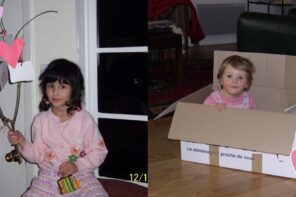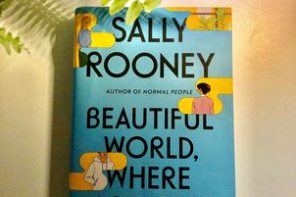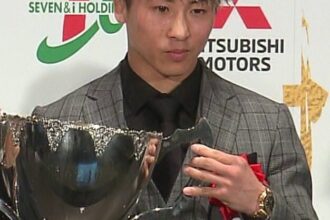As Arts & Culture editors, English majors, and avid readers, it’s safe to say that we are deeply entrenched in media and literary analysis. However, as we make our way through our university career, we have begun to notice the disconnect between the institutional perspectives that have been instilled in us and our personal approaches to analysis. Not everything that we consume is necessarily rich in meaning, but university curricula has promoted the idea that media must be meaningful in order to have value. Academia has changed the way we view and interact with the art we encounter on a daily basis. By analyzing art from this standpoint, we become detached from the media that once brought us joy.
Not everything that we consume is necessarily rich in meaning, but university curricula has promoted the idea that media must be meaningful in order to have value.
Olivia
I am a self-proclaimed literary enthusiast. Lately, however, it has become increasingly difficult to use my favourite pastime as a way to relax. In my classes, professors emphasize techniques such as close reading to analyze texts, and I often find myself interacting with media only in terms of how I can write a paper on it later on. Because my engagement with media is tested in a way that is palatable for my professors, it becomes difficult to consume it passively.
Instead of simply enjoying the books I study in my literature classes, or the films I watch in cultural studies classes, I am always in “academic mode” and have theory in the back of my mind. I have been trained to constantly search for the deeper meaning in art so that my understanding of it can be evaluated, and as a result, I have lost the ability to simply appreciate art for what it is.
Over the holidays, I often watch Hallmark movies with my family. We enjoy keeping a running commentary as we watch, making fun of their irrational plots and general cringey-ness. My dad usually ends up mentioning the unrealistically clean cars and my mom likes to laugh at the set designers’ attempts at conveying winter when the movies are so obviously filmed in the summer. I often find myself raising a point about aspects such as gender roles in the films—the implications of women in Hallmark movies constantly being put in a position where they must choose between romance and a career, and ultimately choosing love. I wonder, what are the values and ideologies that Hallmark circulates through its portrayal of the world, which has an alarming lack of diversity? Instead of simply enjoying the moment with my family, I watch these movies through the lens of the theories I’ve learned in class. I engage with whatever it is I’m watching as if I could be tested on it at any moment.
It’s not that there’s anything wrong with thinking critically about the media we consume—this is an important skill that I’m thankful I’ve had the opportunity to develop—but I miss simply enjoying media without feeling like I’ll have to drop a 1500-word analytical essay on it. The lessons I’ve learned in school have been so ingrained in me that I end up trying to break down what I’m watching shot by shot to understand how it generates meaning, even for films that are notoriously “meaningless.”
As my undergraduate career comes to a close, it is time that I test a new way of engaging with media—consuming it just for fun.
However, this concept of “meaninglessness” points to a different understanding of the value of art. Every English student is probably familiar with the 19th century concept of “art for art’s sake,” meaning that the value of art shouldn’t be tied to its broader social message. In fact, art doesn’t have to “mean” anything at all to have importance. This concept has slipped away from me in a practical sense, as my classes have taught me that art always has to mean something. While I spend so much time searching for deeper meaning and social significance, I’ve lost my ability to see the beauty in art as simply art. As my undergraduate career comes to a close, it is time that I test a new way of engaging with media—consuming it just for fun.
Hannah
I’m a Secondary English Education student, which means that, on top of educational pedagogy and theory classes, I have to take literature courses. While I often question the utility of my program as a whole, I think that my literature classes have been more of a disservice than anything. Reading Anna Karenina or Lolita might allow you to check a book or two off of your “Books To Read Before I Die” list, but the level of analysis that my professors have expected of me will only help me within the university classroom’s walls.
I’m an avid consumer of media, whether that be rewatching New Girl on repeat or speed reading my way through an exciting book series. I can appreciate works that are rich in meaning and implications, but I can also deeply enjoy something that has little purpose. Many hours have been spent reading Crime and Punishment with Glee or Taylor Swift playing in the background. I have never felt the need to justify my tastes, and have always loved seamlessly combining the two forms of art. When it comes to my thoughts regarding a work of art, emotions are always at the forefront of my analysis. My general enjoyment and appreciation of a text determines what textual details I pull out and choose to interpret.
This semester, I’ve been spending the majority of my time in a high school as a student teacher. This field experience has reignited a love for literary analysis that university courses had burnt out of me. The first thing that I ask my students after reading a short story is, “What did you think of the story?” and their responses are always put bluntly as either: “I liked it” or “I hated it.”
I give them the space to process their emotions related to the text and use their appreciation or apathy to fuel our discussion. The conversations we have are rich in meaning and cover a wide variety of topics, but everything that we discuss comes back to one central question: “How does this make you feel as readers?” This allows them to take their gut feelings about a text and elaborate on them to create an interpretation that is full of depth and layers. I always leave the classroom with a completely different perspective about the text—and life as a whole.
I often feel as though my personal thoughts about literature have no place in the university classroom. I sometimes feel alienated in these courses, as everyone around me seems to have developed their own unique interpretation that is rich with nuance. Meanwhile, I’m still struggling to comprehend the story as a whole. While the part of me that seeks academic validation wants to do the best that I possibly can and develop my own unique interpretations, another part of me wants no part in this type of analysis.
At the end of the day, one’s relationship with these different forms of art is a personal one, and I’m thankful that I have not let the way university tests our knowledge of art and literature influence the way I interact with it on a day to day basis.
I like that my appreciation for culture is rooted in emotions. I am grateful that I do not measure the value of art in terms of meaning and depth. I like what I like, and I have never felt the need to justify my taste. At the end of the day, one’s relationship with these different forms of art is a personal one, and I’m thankful that I have not let the way university tests our knowledge of art and literature influence the way I interact with it on a day to day basis. I think that this viewpoint will serve me well as a teacher, and will help me to foster an appreciation for literature in my students. It may not serve me in academia, but I think that living a life guided by emotions and feelings can only be beneficial.








